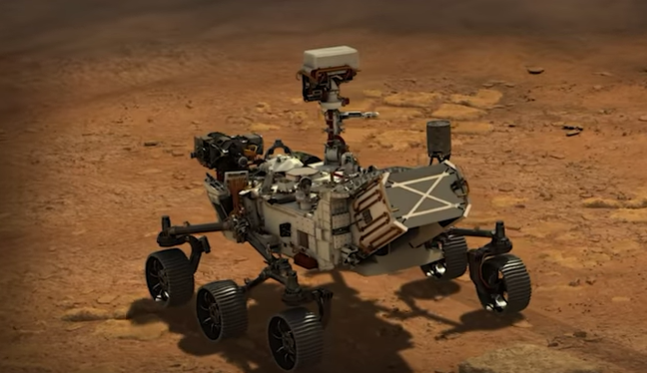
NASA's Mars rover Perseverance, a robotic astrobiology lab that is packed inside a space capsule, has hit the final stretch of its journey from Earth for seven month this week. The rover is set to emit a radio alert as it gets into the thin Martian atmosphere.
By the time that the radio alert signal reaches mission manages 127 million miles or 204 million km away at the Jet Propulsion Laboratory or JPL near Los Angeles, California, the rover will have landed on Mars and experts are hoping it will land in one piece.
NASA's Perseverance on Mars
The rover is expected to take at least seven minutes to descend from the top of the atmosphere of Mars to the Red Planet's surface in less time than the 11-minute plus radio transmission to Earth.
On February 18, it is the final, self-guided descent of the rover spacecraft and it is set to happen during a white-knuckled interval that JPL engineers refer to as the "seven minutes of terror", according to BBC.
Also Read: NASA: Seven TRAPPIST-1 'Earth-Sized' Planets Likely Have Oddly the Same Material Composition
Head of the JPL descent and landing team, Al Chen, called it the most critical and most dangerous part of the mission that costs $2.7 billion.
Chen stated that success is never assured and that is true when they are trying to land the biggest, heaviest and most complicated rover that they have ever built to the most dangerous site that they have ever attempted to land at.
Experts are all riding on the outcome of the mission. Building on discoveries of almost 20 U.S outings to Mars back to Mariner 4's 1965 flyby, NASA's Perseverance may help the scientists to show whether there is life beyond Earth while paving the way for human missions to the fourth planet from the sun, according to Houston Chronicle.
Success will then hinge on a complex sequence of events unfolding without any hitch, from inflation of a giant, supersonic parachute to deployment of jet-powered sky crane that will then descent to a safe and careful landing spot and hover above the surface while lowering the rover to the ground on a tether.
Chen stated that Perseverance has to do this all on its own and experts can't help it during this period. If the mission goes according to their plan, NASA would get a follow-up radio signal shortly before 1 p.m. Pacific time confirming that Perseverance landed on Mars at the edge of an ancient, long-vanished river delta and lake bed.
Science on Mars
The nuclear battery-powered rover which is the size of a small SUV, will then go on a journey wherein its primary objective for two years is to engage a complex suite of instruments in the search for signs of microbial life that may have flourished on Mars billions of years ago, according to Reuters.
Advanced power tools will then drill samples from Mars rock and seal them into cigar-sized tubes for eventual return to Earth for more analysis, the first such specimens ever collected by humankind from the surface of another planet.
The two future missions to get the samples and fly them back to Earth are in the planning stages by NASA, in collaboration with the European Space Agency.
Related Article: Mars has a Chandler Wobble Similar to Earth, Space Probe Finds: Here's What it Means
This article is owned by Tech Times
Written by Sieeka Khan
ⓒ 2025 TECHTIMES.com All rights reserved. Do not reproduce without permission.




